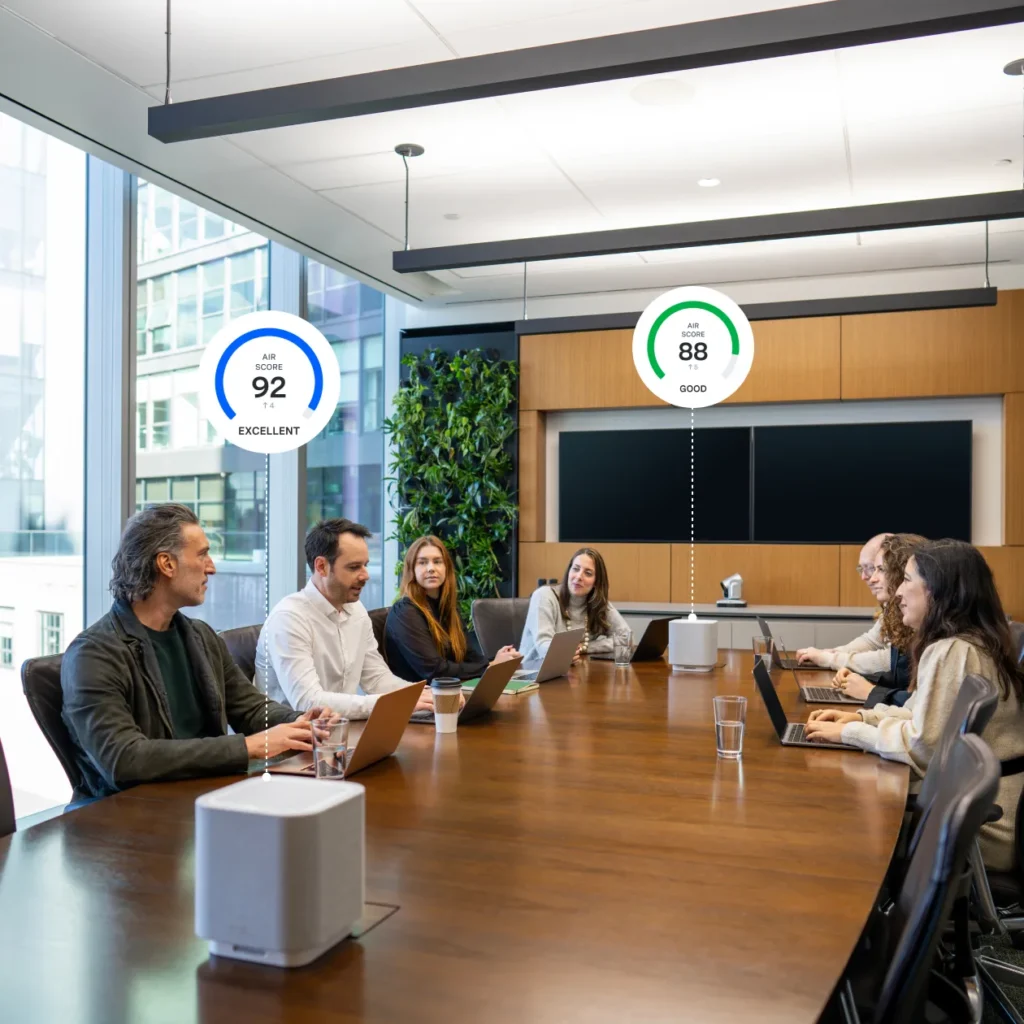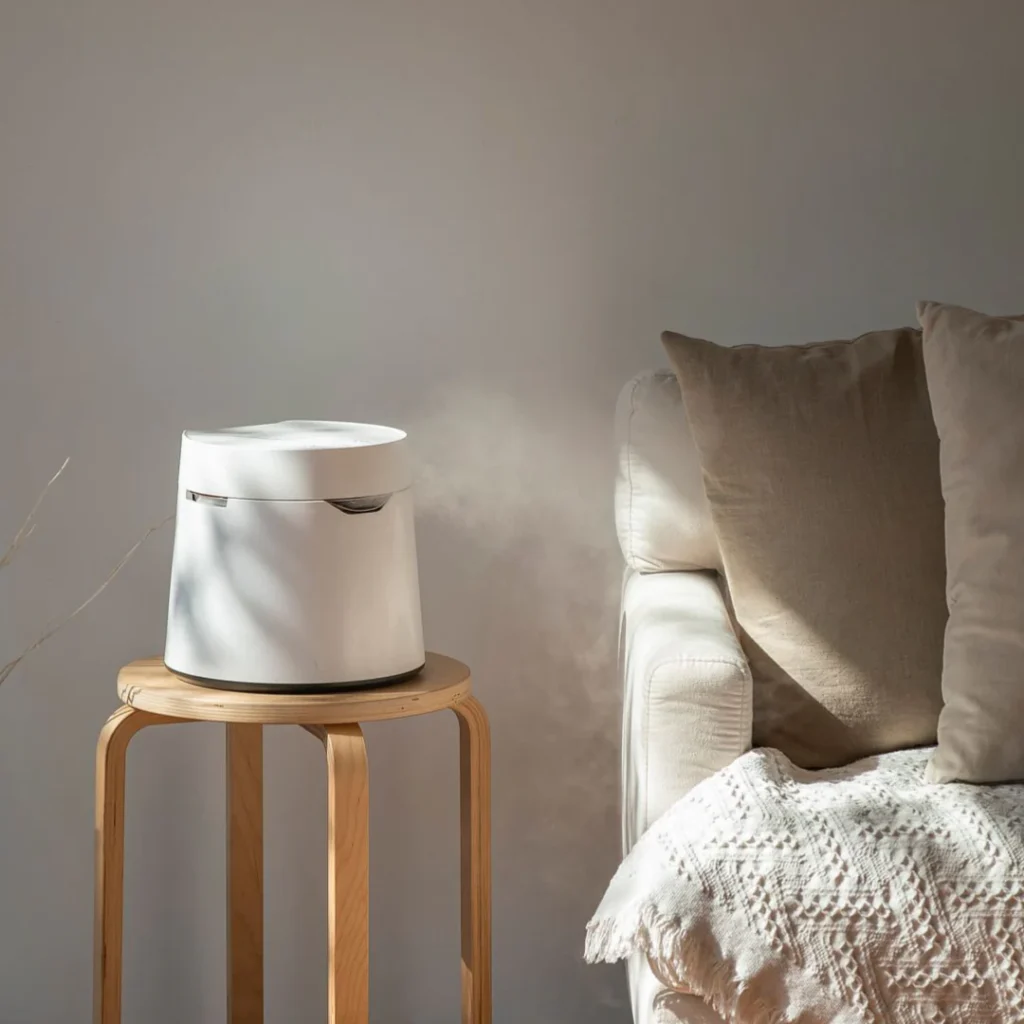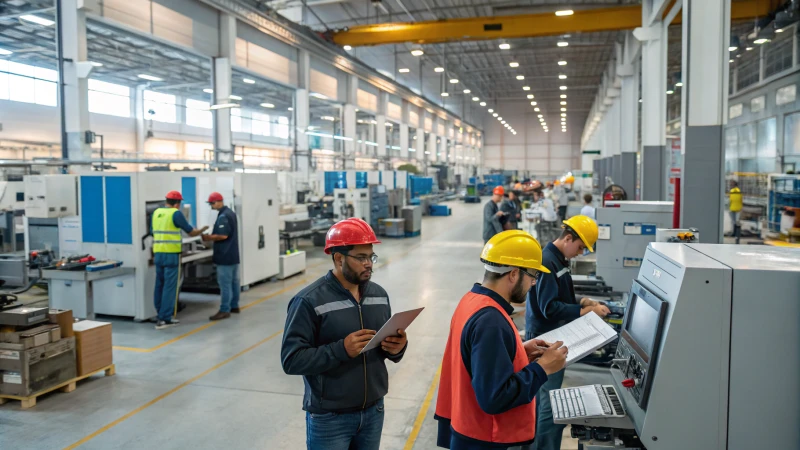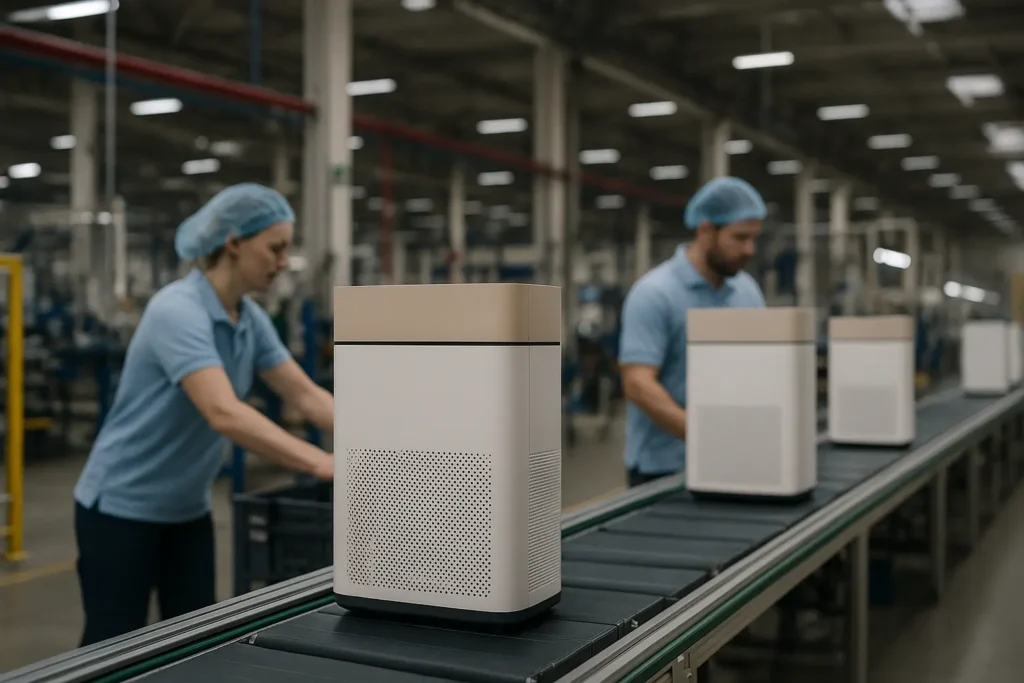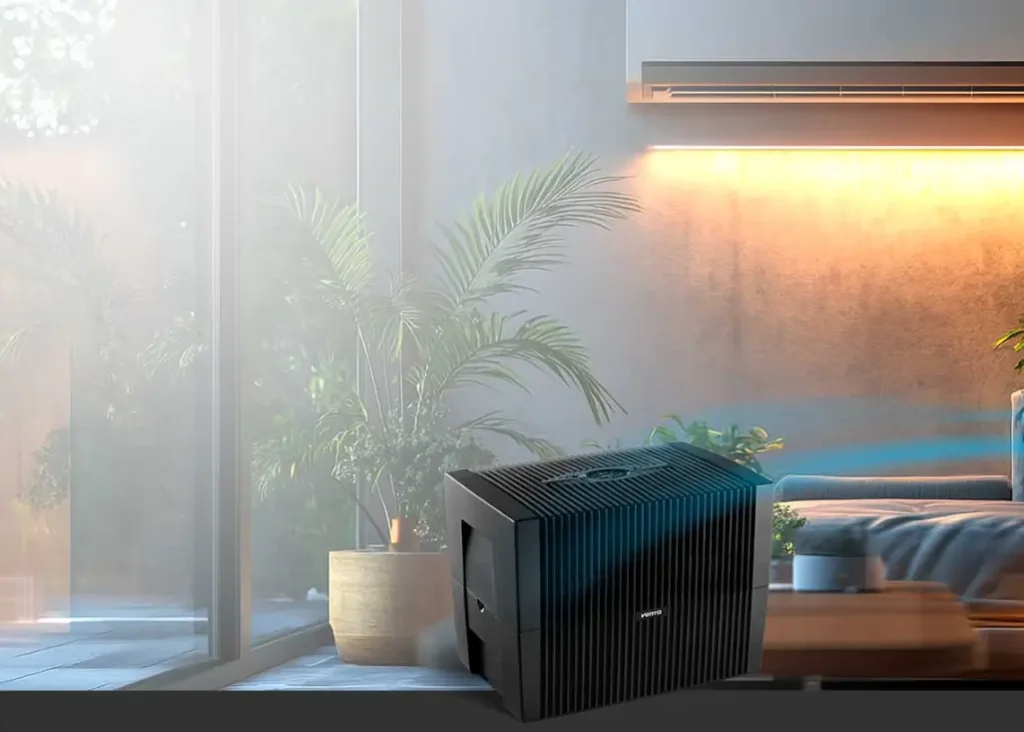Сезонная аллергия может быть неприятной и потенциально опасной. Хотя от нее нет лекарства, существуют эффективные средства ее предотвращения и лечения. Мы перечислили эти средства ниже.
В определенные периоды года люди страдают от аллергических реакций. Сезонная аллергия возникает, если ваш организм чувствителен к определенным пыльцам растений, деревьев и трав. В зависимости от степени восприимчивости, вы можете страдать от аллергических реакций один или два месяца в году.
Симптомами сезонной аллергии являются кашель, чихание, насморк и зуд в глазах. Эти симптомы могут длиться от нескольких часов до нескольких дней. В некоторых тяжелых случаях они могут переходить в тяжелые формы.
Избавление от сезонной аллергии и ее профилактика должны стать приоритетом в вашем доме. Существуют эффективные методы и стратегии, которые вы можете использовать, включая применение высококачественные воздухоочистители медицинского класса.
Откуда берется сезонная аллергия?
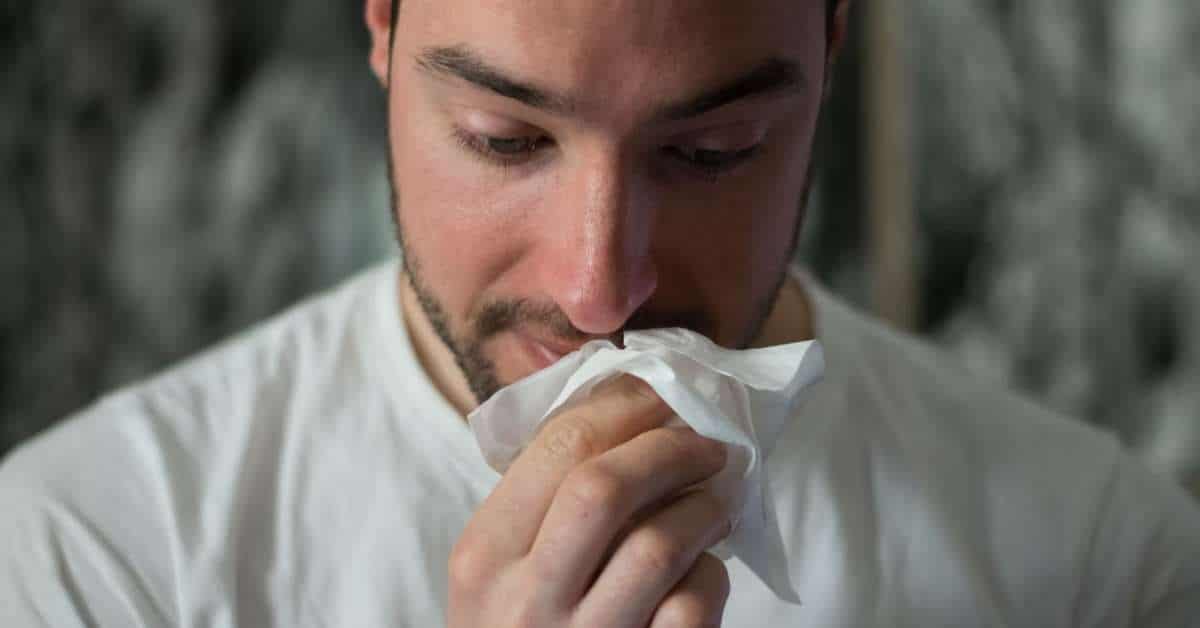
Источник изображения: Unsplash
Как правило, аллергия возникает, когда что-то попадает в ваш организм, и ваша иммунная система говорит вам, что это опасно. В ответ на это организм выделяет в кровь химические вещества, такие как гистамины. Именно они вызывают симптомы аллергии.
Существует множество причин сезонной аллергии. Весной чаще всего причиной становятся деревья. Сенная лихорадка часто возникает, когда люди вдыхают пыльцу каштана, тополя, ивы и ольхи.
Лето - тоже не самый безопасный период. Сенокошение часто является причиной аллергии в этот период. Однако такие травы, как тимофеевка и райграс также могут вызывать сенную лихорадку.
Когда наступает осень, следует опасаться амброзии. Они обычно размножаются в районах с умеренным климатом, и с ними довольно трудно бороться. Выделяемая ими пыльца печально известна тем, что вызывает сильную аллергию.
Зимой эти растения и деревья находятся в состоянии покоя. Но поскольку люди обычно остаются дома, они подвержены риску вдыхания аллергенов, таких как пылевые клещи и плесень.
Нормально ли наличие аллергенов в воздухе?

Источник изображения: Unsplash
Если вы находитесь за пределами своего дома, то да, это нормально, что там присутствуют аллергены. Это то, что вы не можете контролировать, поскольку там растут деревья, цветы и травы. Там присутствуют и другие вещества, которые могут вызвать аллергию, например химикаты и токсичные газы.
Но в вашем доме эти аллергены не встречаются в естественных условиях. Эти вещества, вызывающие аллергию, не должны присутствовать в помещении, особенно в контексте вашей сезонной аллергии.
Есть ли в вашем доме распускающиеся растения или цветы? Есть ли в доме деревья? Если вы ответили на эти вопросы отрицательно, то аллергены можно считать аномальным явлением. От них следует избавиться, иначе вы будете страдать от неприятных аллергических реакций.
Может ли сезонная аллергия быть опасной?
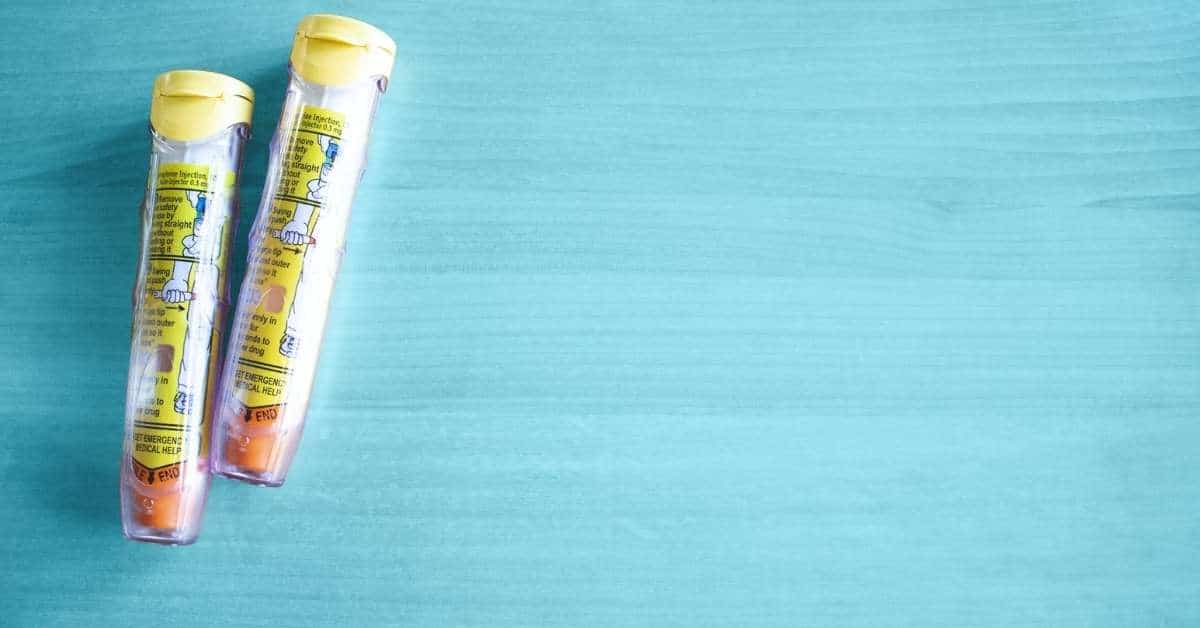
Источник изображения: Unsplash
Аллергия - это очень распространенное явление. Соответственно, более 50 миллионов американцев ежегодно страдают от различных видов аллергии. Более того, она также входит в число основных причин хронических заболеваний в этой стране.
Чаще всего аллергическая реакция проявляется следующими симптомами: чиханием, сыпью, кашлем и насморком. Эти симптомы также представляют собой состояние, называемое сенная лихорадка.
Возможны и тяжелые аллергические реакции. Они могут вызвать затрудненное дыхание, снижение артериального давления и частые приступы астмы. Это также может привести к смерть от анафилаксии. Последняя часто вызывается лекарствами и пищей. Но иногда его могут вызвать сезонные и неизвестные аллергены.
Поэтому аллергию никогда нельзя упускать из виду. Необходимо незамедлительное лечение и профилактические меры, чтобы держать это состояние под контролем.
Общие места в вашем доме, где присутствуют аллергены

Источник изображения: Unsplash
Когда наступает сезон аллергии, в вашем доме есть определенные места, за которыми нужно следить. Так или иначе, в этих местах часто скапливаются аллергены.
Жилые комнаты
Из-за наличия окон и дверей в непосредственной близости от вашей гостиной, аллергены и другие загрязняющие вещества могут легко распространяться там. Поэтому очень важно, чтобы Очиститель воздуха с сертификатом AHAM в этом районе, чтобы не допустить распространения загрязняющих веществ в воздухе.
Спальни
Ваши спальни также не защищены от аллергенов. Не забывайте, что в этих помещениях также есть окна и другие отверстия. Если вы время от времени открываете эти окна, вполне вероятно, что в них могут проникать загрязняющие вещества извне.
Подвал
Если в полах и стенах есть трещины, в них также могут процветать сезонные аллергены. Вы должны следить за ними, особенно в сырых помещениях, таких как подвал. Ведь аллергены могут размножаться во влажной среде. Убедитесь в том, что вы провели необходимый ремонт подвала, включая сантехнику и водопровод.
Почему очистка от аллергенов важна?
В основном аллергия поражает носовые ходы, пазухи, дыхательные пути и даже кожу. Она может целенаправленно воздействовать на пищеварительную систему, вызывая дискомфорт на протяжении всего времени.
Имейте в виду, что аллергические реакции варьируются от легких до тяжелых. В тяжелых случаях человек может испытывать самые страшные симптомы аллергии. Конечно, вы не хотите, чтобы это случилось с вами или членами вашей семьи.
Устранение аллергенов в жилых помещениях очень важно для того, чтобы вы не страдали от сезонной аллергии. Вам следует попробовать стратегии очистки, которые позволят уменьшить или устранить присутствие этих вызывающих аллергию веществ. Один из способов сделать это - использовать Воздухоочистители HEPA.
Добавьте очиститель воздуха, чтобы избавиться от сезонной аллергии

Источник изображения: iStockphoto
Одним из наиболее эффективных способов устранения и предотвращения сезонной аллергии является использование воздухоочистителей. Эти очистители воздуха предназначены для устранения или удаления различных загрязняющих веществ, находящихся в воздухе, таких как распространенные причины аллергии.
Читайте далее, чтобы узнать больше об этих очистителях воздуха и о том, как они могут помочь вам облегчить симптомы и распространенность сезонной аллергии.
Почему очиститель воздуха важен для улучшения качества воздуха?
Качество воздуха в помещениях - это проблема сегодняшнего дня. Соответственно, загрязнение воздуха в помещениях приводит к более серьезным проблемам со здоровьем, чем на улице. Ведь концентрация загрязняющих веществ в закрытых помещениях довольно высока по сравнению с наружной средой.
Трудно бороться с частицами, находящимися в воздухе. Обычные методы уборки, такие как пылесос, не могут эффективно удалить их. Кроме того, они свободно перемещаются, так как легки и невидимы. Справиться с ними без специализированных систем совершенно невозможно.
Очистители воздуха - это решение для улучшения качества воздуха в помещении. В этих очистителях воздуха используется простая, но эффективная система фильтрации, которая улавливает ряд загрязняющих веществ, таких как перхоть домашних животных, пылевые клещи, грязь и пыльца. Эти устройства также необходимы для минимизации присутствия бактерий и вирусов.
Читайте далее, чтобы узнать, как эти воздухоочистители работают для устранения сезонной аллергии.
Очистители воздуха для устранения сезонной аллергии
Существует обширный список возможных способов лечения сезонной аллергии. Но если вы хотите найти безотказное средство, вам нужно вложить деньги в очистители воздуха. Очистители воздуха не лечат аллергию, а предотвращают ее появление.
Ключевой термин здесь - "удаление". После установки таких воздухоочистителей в жилых помещениях аллергены, такие как пыльца, не смогут свободно циркулировать в воздухе. Разумеется, это приведет к минимальному воздействию этих инородных тел.
Очистители воздуха могут контролировать присутствие загрязняющих веществ в воздухе в определенном месте. Механизм фильтрации в них прост. Однако они достаточно эффективно устраняют из воздуха распространенные причины сезонных аллергий.
Безопасны ли очистители воздуха для устранения сезонной аллергии?
Однозначно. Воздухоочистители на основе фильтров, как правило, безопасны, поскольку не выделяют вредных веществ и остатков. В фильтры не добавляются соединения веществ, представляющих угрозу для здоровья человека.
Единственный тип воздухоочистителей, к которому следует относиться с опаской, - это озоновые воздухоочистители. Эти озоновые воздухоочистители производят озон - газообразное соединение, которое, как утверждается, нейтрализует определенные загрязнения.
Озоновые фильтры используются в системах фильтрации воды. Однако они не слишком подходят для очистки воздуха, поскольку озон является одним из видов раздражителей легких. Его воздействие может привести к осложнениям со здоровьем. В то же время Агентство по охране окружающей среды отметило эффективность этих озоновые очистители воздуха еще не проверен.
Как очистители воздуха устраняют причины сезонной аллергии?
Сезонная аллергия обусловлена воздействием элементов, имеющих "сезонный" характер, например пыльцы. Это означает, что они присутствуют только в определенные периоды года.
Очистители воздуха борются с этими веществами с помощью фильтров HEPA. Проще говоря, фильтры HEPA удаляют микроскопические частицы. Они способны улавливать загрязняющие вещества размером до 0,3 микрона. Таким образом, они способны задерживает аллергены и некоторые патогенные микроорганизмы.
Эти фильтры HEPA обычно изготавливаются из пластиковых волокон или боросиликатного стекла. Они располагаются в слое волокон со случайным расположением. Но фильтры HEPA не работают как сито, которое задерживает крупные частицы и пропускает мелкие. Вместо этого они задерживают частицы путем перехвата, диффузии и уплотнения. Короче говоря, эти загрязнения в конечном итоге прилипают к волокнам.
Устранение сезонной аллергии с помощью очистителя воздуха: Шаг за шагом
Очистители воздуха эффективно удаляют аллергены из воздуха. Вот как это делают очистители воздуха:
- В воздухоочистителях установлены вентиляторы, которые втягивают воздух внутрь. В них есть отверстия, через которые поступает воздух.
- Внутри прибора воздух проходит через несколько слоев фильтров. Стандартный воздухоочиститель имеет следующие фильтры: фильтр предварительной очистки, HEPA-фильтр и угольный фильтр.
- Именно на HEPA-фильтре задерживается большая часть аллергенов. Обычные фильтры не могут устранить аллергены из-за их чрезвычайно малого размера.
- Пройдя через все фильтры, воздух распределяется обратно в помещение.
Процесс повторяется до тех пор, пока присутствие загрязнений, вызывающих аллергию, не будет контролироваться. Как видите, процедура довольно проста. Но она достаточно эффективна для предотвращения всплеска сезонной аллергии.
Как долго проходит сезонная аллергия после удаления?
Аллергические реакции имеют разную продолжительность. Даже если вы успешно устранили причину аллергии, это не означает, что симптомы сразу же исчезнут.
В некоторых случаях аллергия исчезает через пару часов, особенно если человек больше не подвергается воздействию провоцирующих факторов. Однако у некоторых людей все очень плохо. Им приходится терпеть симптомы в течение нескольких дней.
И в этом случае большую роль играет воздействие. В сезоны аллергии аллергические реакции, скорее всего, будут длиться дольше. Поэтому необходимо установить в жилых помещениях очиститель воздуха, чтобы предотвратить длительные мучения.
Что нужно учесть перед покупкой очистителя воздуха для устранения сезонной аллергии
Когда речь идет о борьбе с аллергенами, очень важно приобрести правильный воздухоочиститель. Для того чтобы ваш воздухоочиститель мог улавливать и устранять причины сезонной аллергии, необходимо наличие следующих характеристик.
- Фильтры HEPA - HEPA-фильтр - важный аспект воздухоочистителя. Именно он улавливает 99,9 % загрязнений размером до 0,3 микрона. В этом диапазоне находятся распространенные аллергены, такие как пыльца. Если очиститель воздуха оснащен HEPA-фильтром, это гарантирует, что он сможет отсеять большинство аллергенов в воздухе.
- Фильтр из активированного угля - Аллергию также могут вызывать запахи, газообразные вещества и летучие органические соединения. Фильтры HEPA не могут справиться с такими вещами. Вам нужен угольный фильтр. Последний работает за счет улавливания вышеупомянутых загрязнений на своей поверхности.
- Площадь - Также необходимо оценить радиус действия воздухоочистителя. Например, если площадь вашего жилого помещения составляет 500 квадратных футов, вам нужен воздухоочиститель с площадью покрытия не менее 500 квадратных футов. Чем больше зона действия, тем лучше.
- Скорость подачи чистого воздуха - Вам необходимо проверить коэффициент подачи чистого воздуха воздухоочистителя. В двух словах, этот показатель указывает на объем воздуха, который воздухоочиститель может очистить за определенный период времени и при определенных условиях. Чем выше показатель CADR, тем лучше.
Очистители воздуха, которые лучше всего подходят для избавления от сезонной аллергии
Не все воздухоочистители созданы одинаково. Некоторые из них обладают особыми качествами, которые позволяют им превосходно удалять аллергены из воздуха.
Приведенные ниже очистители воздуха HisoAir относятся к тем системам очистки воздуха, которые необходимо проверить в первую очередь, если вы страдаете от сезонной аллергии:
| Покрытие | Типы фильтров | |
| HisoAir Модель HA-1968 | 1937 квадратных футов | HEPA-фильтр, фильтр с активированным углем, фильтр предварительной очистки, УФ-лампа |
| HisoAir Модель HA-1601 | 1011 квадратных футов | HEPA-фильтр, фильтр с активированным углем, фильтр предварительной очистки, УФ-лампа |
| HisoAir Модель HA-138 | 904 квадратных фута | HEPA-фильтр, фильтр с активированным углем, фильтр предварительной очистки, УФ-лампа |
1. HisoAir Модель HA-1968
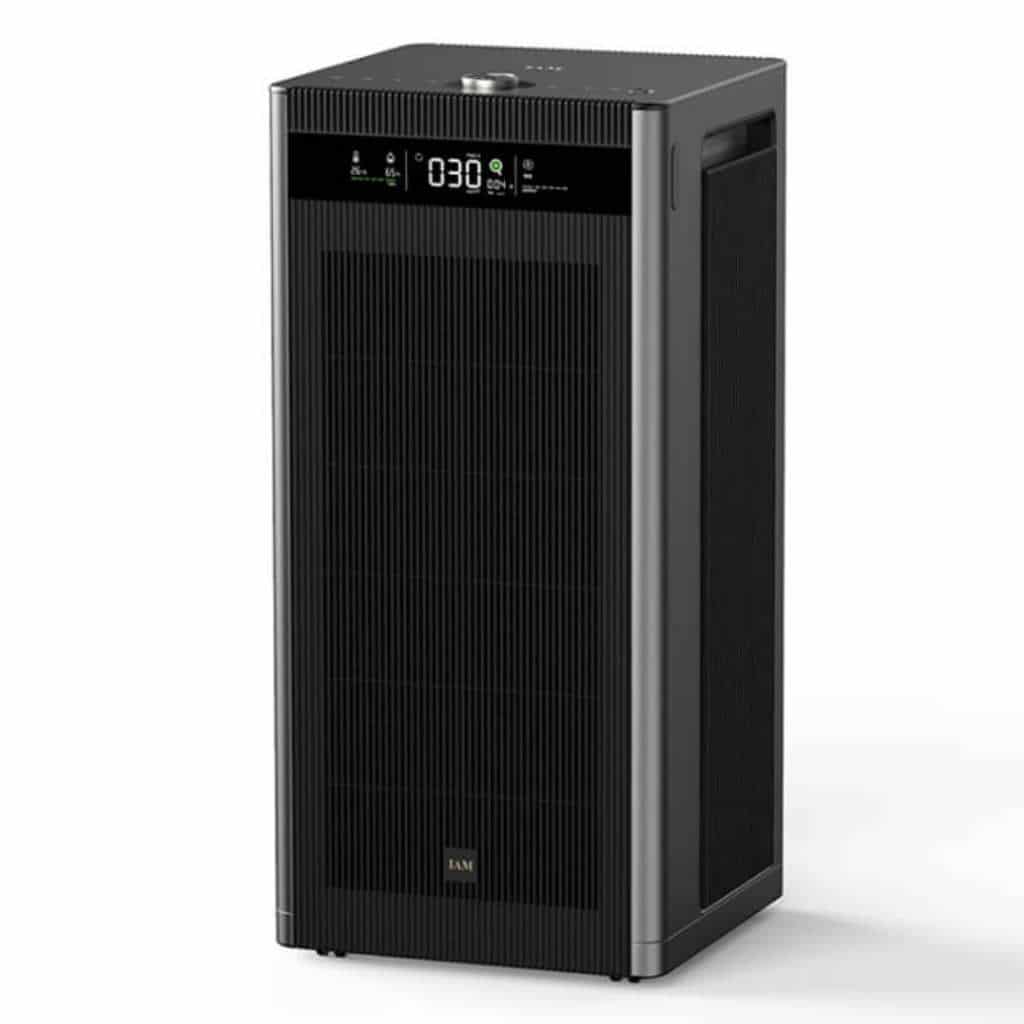
Источник изображения: HisoAir
Модель HisoAir HA-1968 предназначена для больших помещений и является эффективным очистителем воздуха для домов, зданий и школ. Площадь эффективного покрытия этого воздухоочистителя составляет 1937 квадратных футов. В то же время, высокая скорость подачи чистого воздуха (1500 м3/ч) свидетельствует о том, что он может обрабатывать и очищать воздух в больших объемах. Если вам нужен очиститель воздуха для всего дома, этот прибор может стать идеальным вариантом.
Модель HisoAir HA-1968 оснащена необходимыми фильтрами, которые устраняют некоторые загрязняющие вещества в воздухе, например, аллергены. Его HEPA-фильтр имеет конструкцию медицинского класса. Он удаляет 99,9 процента микроскопических загрязнений, таких как пыльца, плесень и споры. С этим воздухоочистителем вы сможете свести к минимуму негативное воздействие весны на ваш организм!
| PROS | CONS |
|
|
2. HisoAir Модель HA-1601
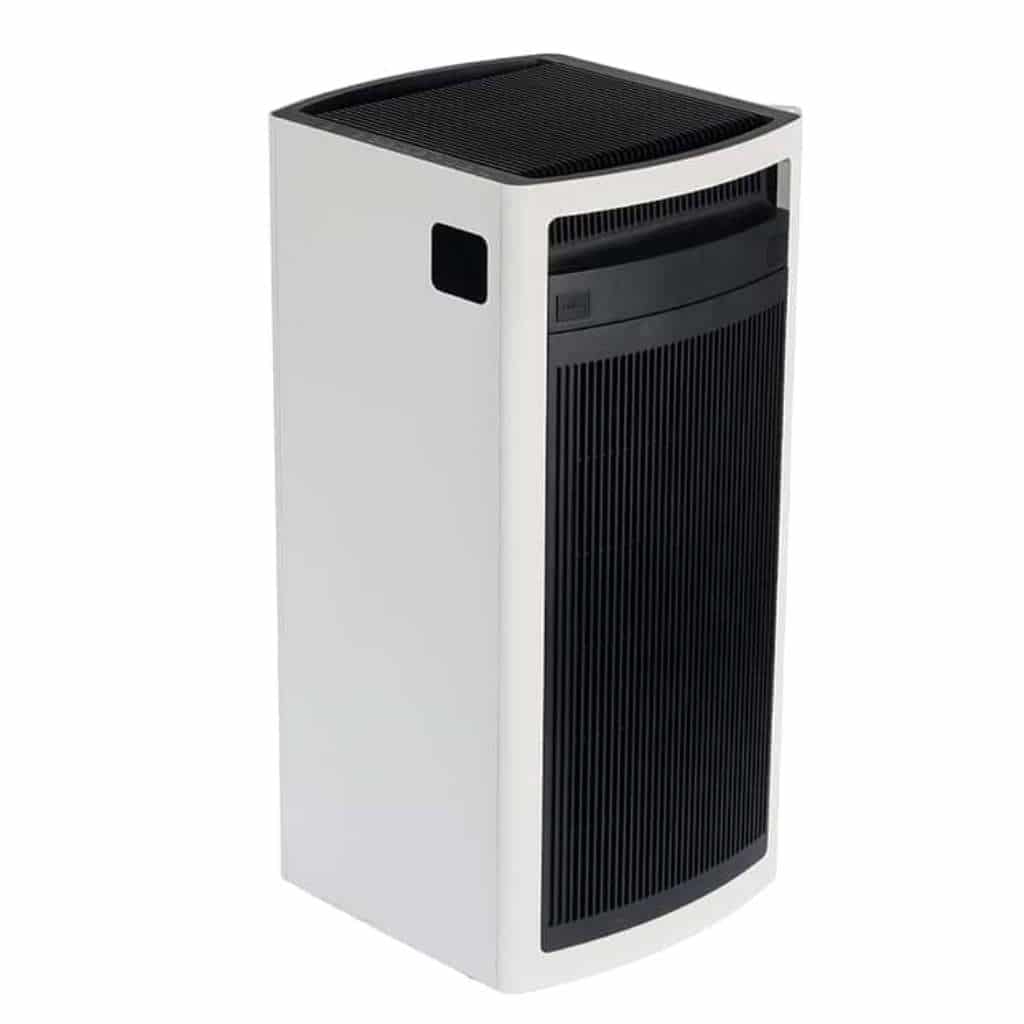
Источник изображения: HisoAir
Еще один очиститель воздуха, на который вам стоит обратить внимание, - HisoAir модели HA-1601. Он предназначен для работы в помещениях площадью до 1 000 квадратных футов. Его радиус действия не так велик, как у модели HA-1968, но все же несомненно велик. Он по-прежнему может очищать воздух в нескольких комнатах. Кроме того, он обладает мощным воздушным потоком, о чем свидетельствует высокая скорость подачи чистого воздуха (800 м3/ч). Вы можете быть уверены, что этот воздухоочиститель способен эффективно бороться с загрязняющими веществами в воздухе.
Этот воздухоочиститель справляется не только с аллергенами. Он также способен удалять болезнетворные микроорганизмы, такие как вирусы и бактерии. Он оснащен HEPA-фильтром, который фильтрует эти микроскопические угрозы, позволяя вам дышать свежим и безопасным воздухом. Кроме того, он оснащен ультрафиолетовой лампой, которая постепенно уничтожает эти патогенные микроорганизмы в воздухе.
| PROS | CONS |
|
|
3. HisoAir Модель HA-138
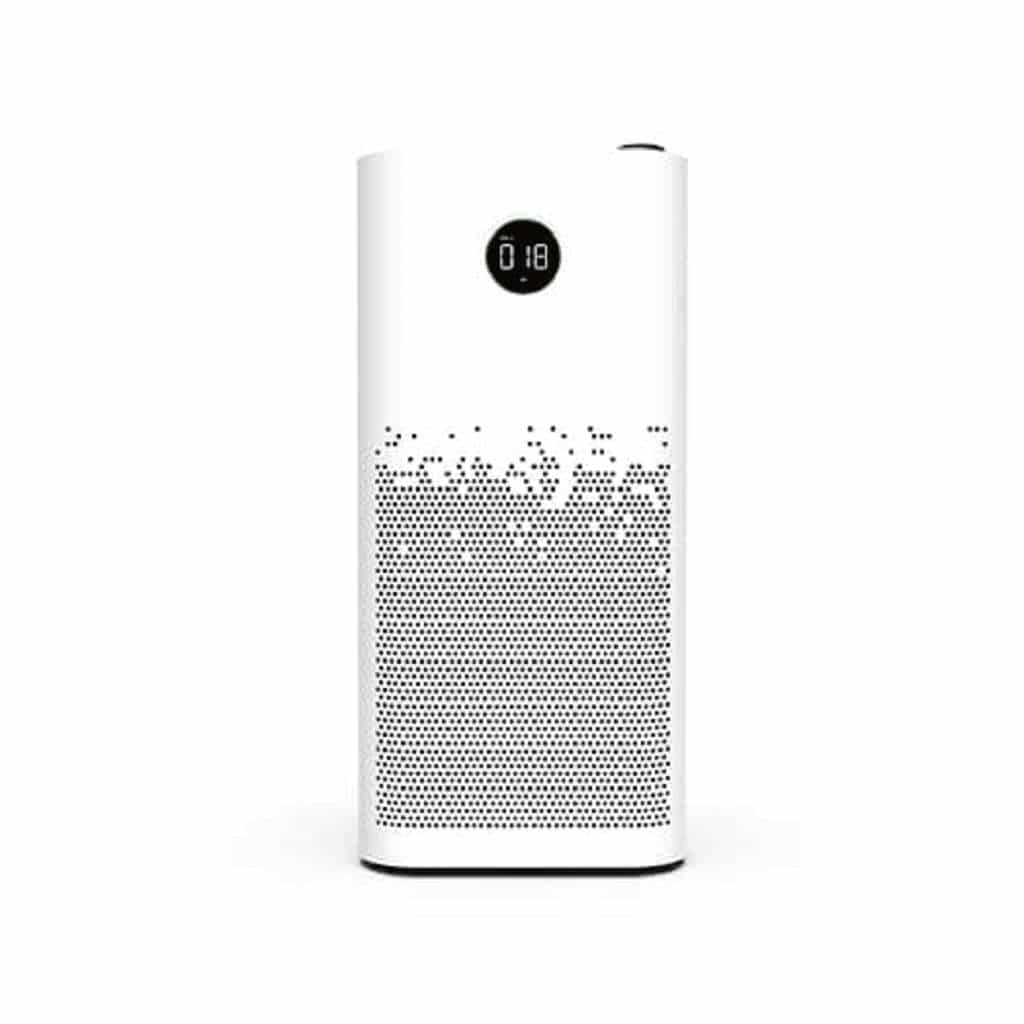
Источник изображения: HisoAir
HisoAir модель HA-138 - это высококлассный цифровой воздухоочиститель. С помощью этого очистителя воздуха ваше помещение будет очищено от распространенных загрязнителей, таких как аллергены, болезнетворные микроорганизмы, газообразные раздражители и вещества. Благодаря фильтру из активированного угля он также эффективно удаляет запахи сигаретного дыма и пищи. Он имеет высокую скорость подачи чистого воздуха (707 м3/ч), что гарантирует его оптимальную работу каждый раз.
Этот воздухоочиститель имеет удобное управление. Технически он позволяет удобно настраивать параметры. Это позволяет оптимизировать работу воздухоочистителя в зависимости от ваших нужд и потребностей. Поскольку он оснащен датчиками качества воздуха, вы сможете узнать общее состояние воздуха в помещении.
| PROS | CONS |
|
|
Как предотвратить сезонную аллергию после удаления?
Сезонная аллергия - серьезное раздражение. Удалив аллергены с помощью очистителей воздуха, вы должны быть уверены, что аллергия больше никогда вас не побеспокоит.
Следующие стратегии могут помочь в этом вопросе.
- Наденьте маску - Аллергены невидимы. Если вы находитесь вне дома, то не можете знать, есть они или нет. Чтобы подстраховаться, надевайте респираторную маску N95. Она блокирует 95 процентов крошечных частиц в воздухе.
- Ешьте здоровую пищу - Такие фрукты, как апельсины и яблоки, могут помочь человеку выработать большую устойчивость к аллергии. Исследователи все еще пытаются найти связь между этими двумя факторами. Однако несомненно, что здоровый организм более устойчив к болезням.
- Уберитесь в доме - Поддерживая чистоту в доме, вы можете свести к минимуму вероятность заболевания сезонной аллергией. Уборка поможет удалить аллергены, оседающие на мебели, полу и стенах жилых помещений. Убедитесь, что вы используете натуральные чистящие средства, поскольку агрессивные химикаты могут раздражать нос.
- Не курить - Сезонная аллергия может обостриться, если кто-то в вашем доме курит. Токсичные остатки сигарет могут усугубить такие симптомы, как раздражение глаз и насморк. Не позволяйте курильщику помешать вам почувствовать целостное облегчение от аллергии!
Другие способы избавиться от сезонной аллергии
Миллионы людей страдают от сезонной аллергии. С наступлением весны многие начинают чихать, кашлять и мучиться от насморка.
К счастью, есть и другие эффективные способы борьбы с симптомами сезонной аллергии. Вот некоторые из них:
Безрецептурные средства
У вас есть несколько вариантов безрецептурных лекарств, способных избавить от симптомов аллергии. Ниже перечислены наиболее вероятные способы лечения:
- Антигистаминные препараты - Антигистаминные препараты - самое распространенное средство для лечения симптомов аллергии, таких как слезящиеся глаза и насморк. Обычно они принимаются перорально.
- Назальные спреи - Кортикостероидные назальные спреи - это лекарства, которые могут облегчить симптомы аллергии. Однако будет лучше, если вы проконсультируетесь с врачом о возможных последствиях длительного использования этих назальных спреев.
-
- Деконгестанты - Существуют пероральные деконгестанты, которые могут облегчить заложенность носа. Примером таких деконгестантов является псевдоэфедрин. В состав некоторых антигистаминных препаратов входят деконгестанты. Посоветуйтесь со своим лечащим врачом, безопасны ли для вас эти пероральные деконгестанты.
Альтернативные средства
Следует знать, что существуют натуральные средства, которые эффективно лечат симптомы аллергии и сенной лихорадки. Хотя их эффективность зависит от способа применения и концентрации, эти альтернативные лекарства способны облегчить состояние при аллергии.
У вас есть несколько вариантов, например, спирулина и белокопытник. Последний весьма перспективен. Но ограниченные клинические данные не подтверждают его общую безопасность и эффективность.
Закрытие отверстий
Все мы согласны с тем, что весна - это здорово. Дуновение ветра так и манит, правда? Однако именно там процветает пыльца.
В это время года количество пыльцы в воздухе довольно велико. Поэтому, чтобы предотвратить сезонную аллергию, нужно плотно закрывать окна и двери. В то же время вы можете установить HEPA-фильтр на систему кондиционирования.
Также может помочь установка панельного фильтра на лицо. Таким образом, аллергены не будут попадать туда.
Обширные процедуры
Для многих людей уже достаточно просто избегать воздействия и использовать безрецептурные препараты. Однако если сезонная аллергия все же не проходит, можно воспользоваться другими, более комплексными методами лечения.
Обратитесь к врачу, чтобы он смог провести диагностику. Они могут провести анализы крови и кожи, чтобы определить, что вызывает аллергию. Благодаря этим тестам вы сможете принять необходимые меры, чтобы избежать аллергенов.
Уколы от аллергии становятся все более популярными в наши дни. Это лечение подразумевает введение в организм небольшого количества веществ, вызывающих аллергию. Это заставит вашу иммунную систему меньше реагировать на эти вещества.
Заключение
Сезонные аллергии доставляют немало хлопот. Они требуют быстрого и эффективного лечения, чтобы их симптомы не усугублялись. Если вы страдаете от аллергии, вам необходимо принять дополнительные меры, чтобы избежать попадания аллергенов в воздух.
Использование воздухоочистителей - одно из самых эффективных средств борьбы с сезонной аллергией. С помощью таких воздухоочистителей аллергены не смогут свободно циркулировать в воздухе. Когда речь идет об очистителях воздуха, HisoAir - это бренд, которому стоит доверять. Посетите HisoAir и проверьте все его высококачественные воздухоочистители!
Ознакомьтесь с другими нашими познавательными блогами!


